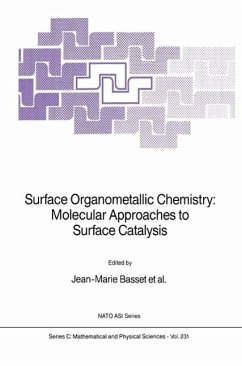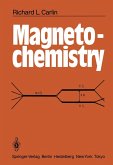Surface organometallic chemistry is a new field bringing together researchers from organometallic, inorganic, and surface chemistry and catalysis. Topics ranging from reaction mechanisms to catalyst preparation are considered from a molecular basis, according to which the "active site" on a catalyst surface has a supra-molecular character. This. the first book on the subject, is the outcome of a NATO Workshop held in Le Rouret. France, in May. 1986. It is our hope that the following chapters and the concluding summary of recommendations for research may help to provide a definition of surface organometallic chemistry. Besides catalysis. the central theme of the Workshop, four main topics are considered: 1) Reactions of organometallics with surfaces of metal oxides, metals. and zeolites; 2) Molecular models of surfaces, metal oxides, and metals; 3) Molecular approaches to the mechanisms of surface reactions; 4) Synthesis and modification of zeolites and related microporous solids. Most surface organometallic chemistry has been carried out on amorphous high-surf ace-area metal oxides such as silica. alumina. magnesia, and titania. The first chapter. contributed by KNOZINGER. gives a short summary of the structure and reactivity of metal oxide surfaces. Most of our understanding of these surfaces is based on acid base and redox chemistry; this chemistry has developed from X-ray and spectroscopic data, and much has been inferred from the structures and reactivities of adsorbed organic probe molecules. There are major opportunities for extending this understanding by use of well-defined (single crystal) oxide surfaces and organometallic probe molecules.
Dieser Download kann aus rechtlichen Gründen nur mit Rechnungsadresse in A, B, BG, CY, CZ, D, DK, EW, E, FIN, F, GR, HR, H, IRL, I, LT, L, LR, M, NL, PL, P, R, S, SLO, SK ausgeliefert werden.
`The book is fascinating to read and is warmly recommended to coordination chemists as well as surface and catalysis scientists, who will find here a wealth of stimulating ideas.'
R. Bertani, Inorganic Chimica, Acta, 157, 1989
`Without exception each chapter is a lucid account of the topic intelligible to the non-specialist.
I strongly recommend this book to my fellow synthetic inorganic chemists who may be thinking of applying their skills to heterogeneous systems. This book is full of answers to questions we are afraid to ask because they seem too basic.'
Journal of Electroanalytical Chemistry, 289:299, 1990
R. Bertani, Inorganic Chimica, Acta, 157, 1989
`Without exception each chapter is a lucid account of the topic intelligible to the non-specialist.
I strongly recommend this book to my fellow synthetic inorganic chemists who may be thinking of applying their skills to heterogeneous systems. This book is full of answers to questions we are afraid to ask because they seem too basic.'
Journal of Electroanalytical Chemistry, 289:299, 1990
`The book is fascinating to read and is warmly recommended to coordination chemists as well as surface and catalysis scientists, who will find here a wealth of stimulating ideas.' R. Bertani, Inorganic Chimica, Acta, 157, 1989 `Without exception each chapter is a lucid account of the topic intelligible to the non-specialist. I strongly recommend this book to my fellow synthetic inorganic chemists who may be thinking of applying their skills to heterogeneous systems. This book is full of answers to questions we are afraid to ask because they seem too basic.' Journal of Electroanalytical Chemistry, 289:299, 1990









